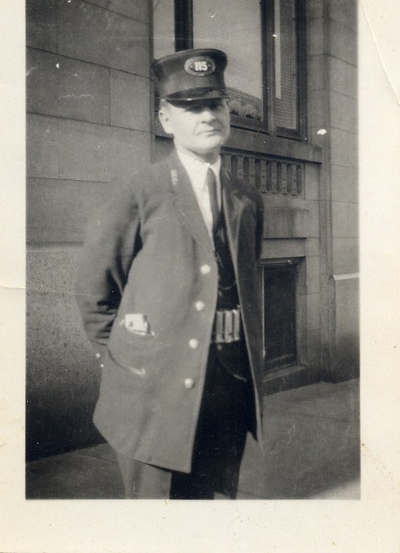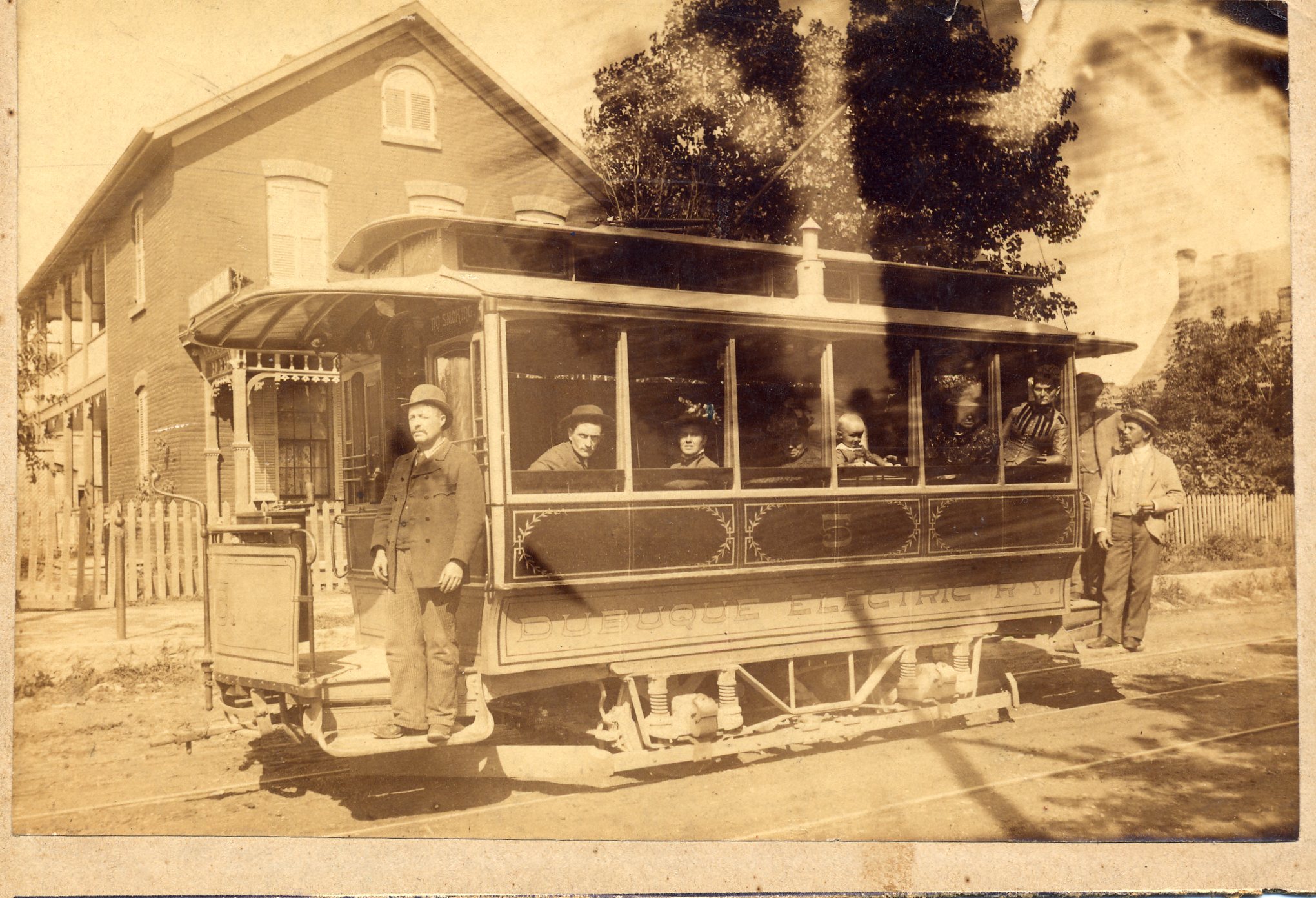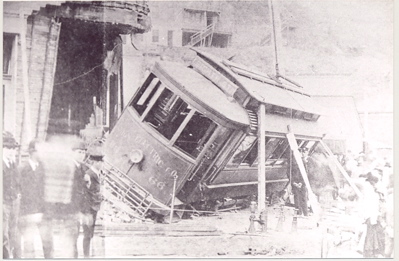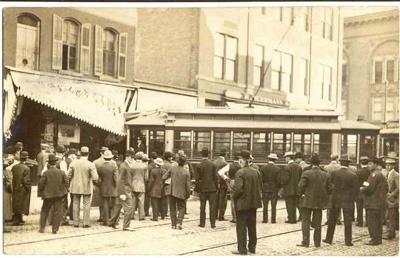Encyclopedia Dubuque
"Encyclopedia Dubuque is the online authority for all things Dubuque, written by the people who know the city best.”
Marshall Cohen—researcher and producer, CNN
Affiliated with the Local History Network of the State Historical Society of Iowa, and the Iowa Museum Association.
STREETCARS
STREETCARS. On April 2, 1867, Dubuque citizens voted 2,188 to 137 to permit the operation of streetcars in the city. At the time, the only other city west of the MISSISSIPPI RIVER to permit streetcars was St. Louis, Missouri. Dubuque was then the largest city in Iowa.
On May 23, 1868, a horse-drawn trolley system, the DUBUQUE STREET RAILWAY COMPANY, was started using fifteen horses and twenty cars. The fare of ten cents was reduced in 1875 to a nickel. Within months the company was leased to Platt SMITH and James Hughes with Joseph A. RHOMBERG as president. When John J. and B. E. Linehan purchased the company in 1876, Rhomberg remained as president and the system became known as the Rhomberg Line. To avoid the need to uncover snow-covered tracks during the winter, sleighs were used.
The Rhomberg Line enjoyed a fine reputation with thirteen strong and well-kept cars, each capable of carrying twenty passengers. The system ran north from the Jones Street river levee, near the present JULIEN DUBUQUE BRIDGE, for thirty blocks. Service was later extended northward to NUTWOOD PARK. The Railway attempted to shorten the one-hour trip by using electric storage battery cars, but the undependable nature of the system caused it to be abandoned.
Beginning on July 12, 1877, a new firm, the Hill Street and West Dubuque Railway Company started by Julius K. GRAVES, attempted to haul passengers up the bluffs using miniature steam locomotives. Poor service, primarily an inability to maintain a time schedule, led the City of Dubuque to threaten to revoke the company's franchise. The equipment was dismantled and moved to Florida. The reputation of the company before it left led to its nickname, "Steam Dummy."
Steam-powered cable cars reached the top of the bluffs at Fourth Street after 1883 and at Eleventh Street after 1887. The ELEVENTH STREET ELEVATOR operation was closed in 1927, but the FOURTH STREET ELEVATOR continued operation.
The formation of the Key City Electric Street Railway Company signaled the arrival of electricity about 1889. The Dubuque Street Railway, then known as the Rhomberg Line, converted to electricity in 1890. A third competitor, the DUBUQUE ELECTRIC RAILWAY, LIGHT AND POWER COMPANY, was started in 1889 by the Allen and Swiney Company. This company operated electric cars from Sixth and Iowa Streets to Jackson Street and the city limits. The Dubuque Electric Railway, Light and Power Company purchased the Key City Electric in 1893 and was reorganized as the DUBUQUE LIGHT AND TRACTION COMPANY.
Reorganization, acquisition and mergers flourished. A single trolley company, HOME ELECTRIC COMPANY, emerged in 1899. The trolley system's car barn burned in 1901, one year before ownership of the trolley system was transferred to the Union Electric Company. In 1903 the bus barn at 24th and Central was constructed to replace the facilities destroyed in 1901.
Labor strife and disaster plagued the trolley system. A strike in 1903, Dubuque's first severe labor trouble, resulted in national notoriety for Union Electric as state troopers were called out to restore order. With the strike settled, the company remained in operation until 1916 when it was sold to the Dubuque Electric Company. Brake failure on Easter, Sunday, April 23, 1905, caused a spectacular accident as a UNION ELECTRIC COMPANY car hurtled off its tracks and struck the unoccupied first floor of the Diamond House at Eighth Street and Julien (University) Avenue.
In the early 1900s service became more elaborate and popular. Eighty-five cars were placed into service with specialized summer cars that allowed breezes to blow on the riders. The ride became so popular that people were often only able to find seating at the end of the line. Some people walked in the opposite direction from which they wanted to go just to get a seat, while other riders jammed the aisles or hung on the roof. A popular trip of thirty-three minutes led to UNION PARK.
By 1924 Dubuque's electric system became the property of INTERSTATE POWER COMPANY. The increasing popularity of automobiles led Interstate to doubt the value of trolleys, and its fleet was reduced from eighty-five to sixty. In 1925 bus feeder lines were started on an experimental basis. The idea was borrowed from the East Dubuque Electric Company that used eight buses to carry thirsty Dubuquers into Illinois when Iowa passed a PROHIBITION law. In 1929 the first street car line, Linwood, was replaced by buses. The last streetcars ran on July 24, 1932. In the years of their operation, streetcars were owned by fourteen different utilities.







